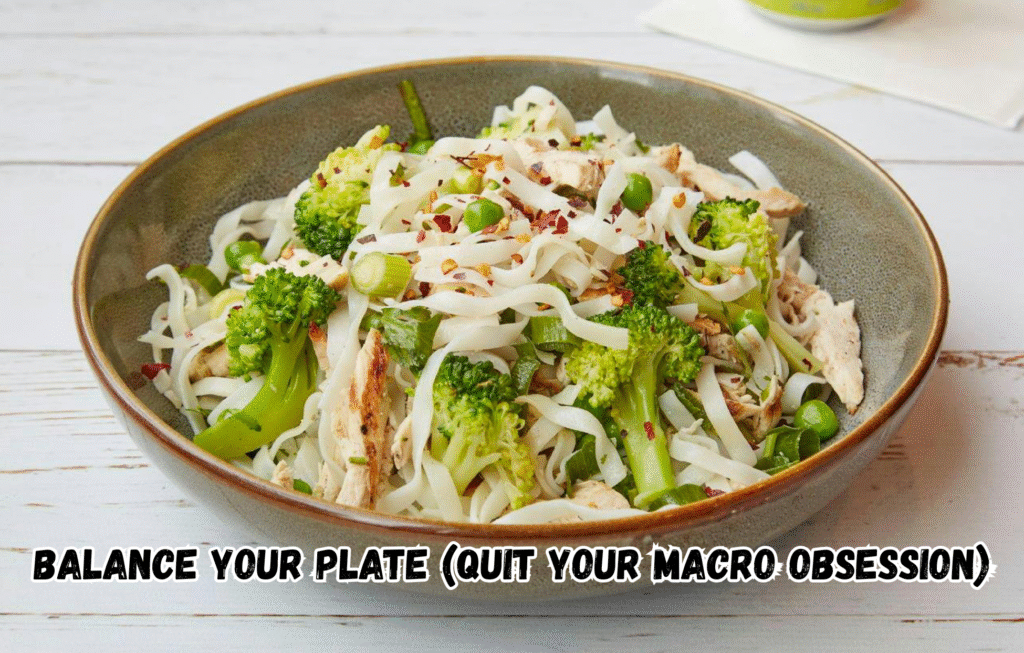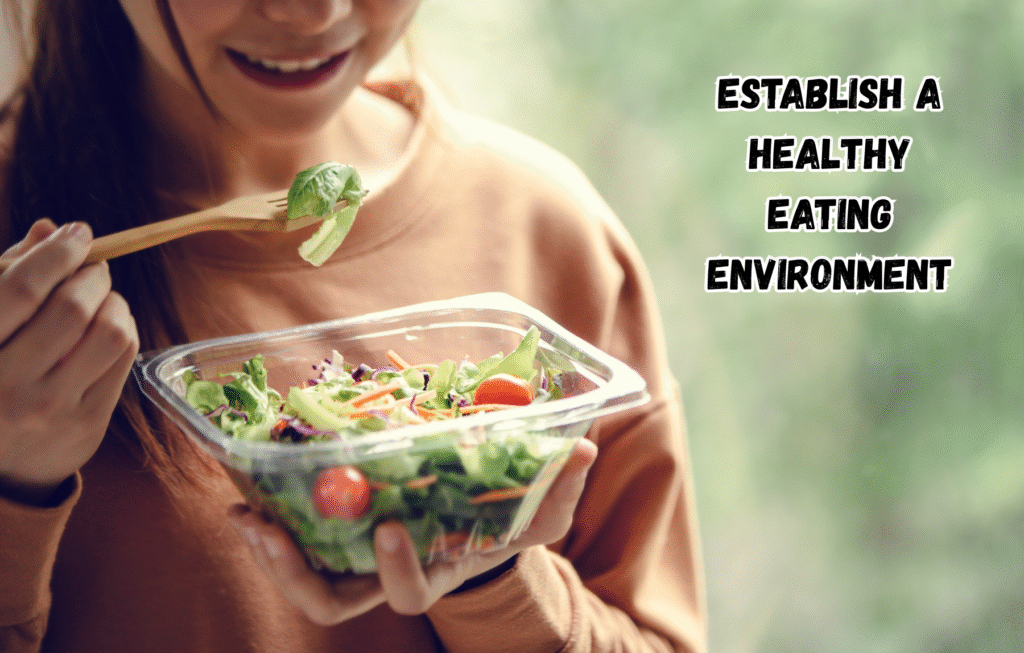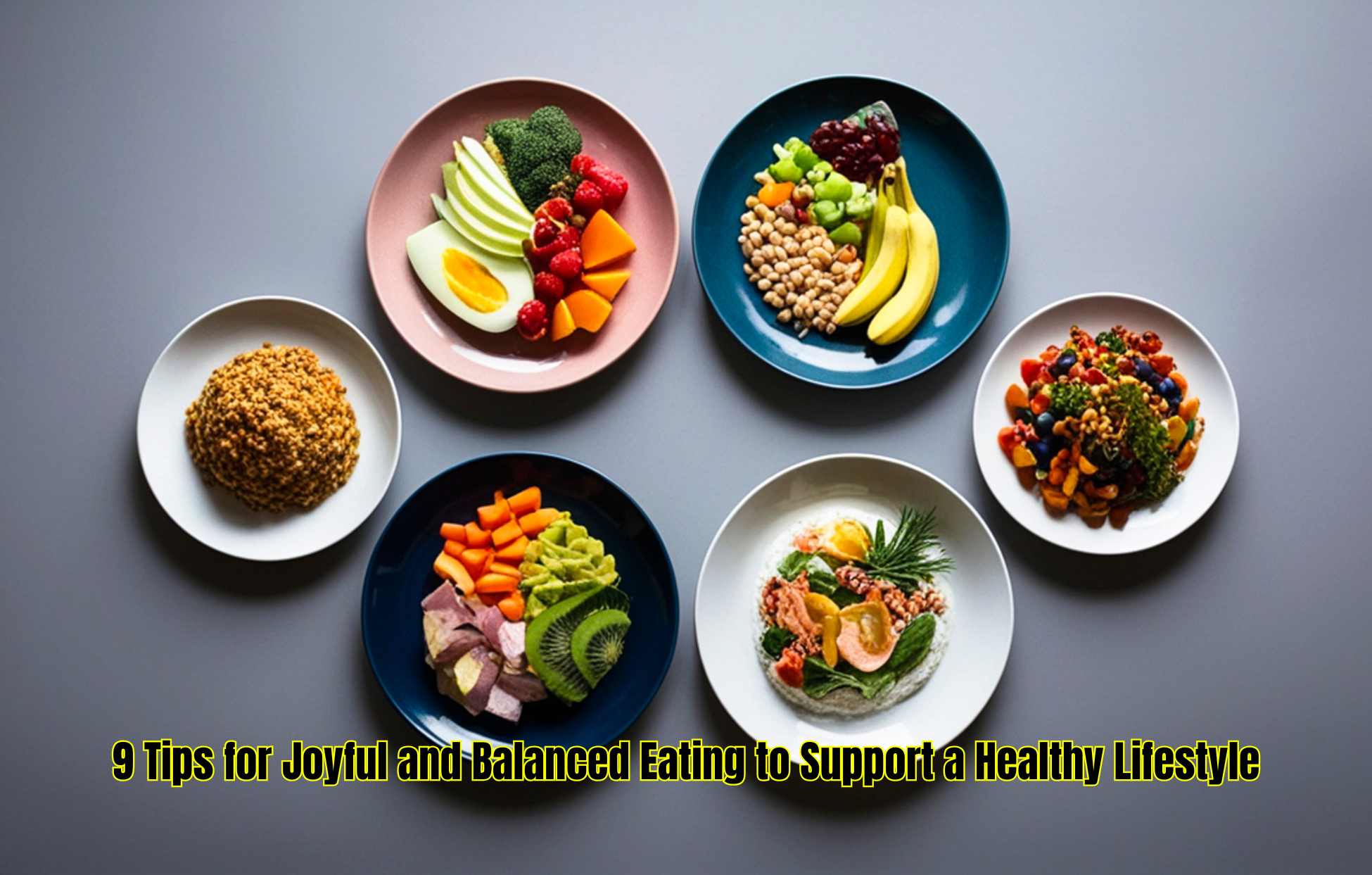9 Ways to Eat Happy, Balanced, and Healthy
In today’s busy world, eating has become little more than a convenience—not a source of sustenance, joy, or community. Fast food, packaged snacks, fad diets, and “weight-reduction plan tradition” have turned consuming into a problem and a fear. But eating is a basic satisfaction in existence—and while approached mindfully, it supports now not simply bodily, however additionally mental and emotional well-being.
“Eating Happy and Healthy” does not suggest fending off essential vitamins. It is about cultivating an awesome reference to food, taking starvation and satiety into consideration, and building behavior that offer you with energy and peace.
Here are 9 simple, science -supported steps to guide you for healthy and pleasant eating without guilt or over -regulation.
1. Ditch Diet Culture, Trust Your Feelings and Needs (Intuitive Eating)
Diet Culture teaches that certain foods are “precise” and others are “bad”—and our self-worth is determined by means of our weight or meals selections. This creates bad eating, strain, and chronic weight-reduction plan. The first step to healthful consuming is to launch those regulations and believe on your hunger cues.
According to the intuitive principle of ingesting, you have to eat when you are hungry, forestall whilst you are full, and devour meals that provide you with a advantageous emotional and bodily feeling.
Line: When you feel hungry, do you ask yourself – do I eat for emotional reasons (boredom, stress), or do I really need energy?
2. Balance your plate (quit your macro obsession)

Balanced meals will fill you up longer and give you the nutrients your body needs. Here’s a quick tip:
- Fill half your plate with veggies or fruit — fiber, vitamins, and antioxidants
- Complex carbs/whole grains — brown rice, millet, oats, whole grain bread
- Protein — lentils, cottage cheese, eggs, fish, chickpeas, soy
- Include healthy fats — avocado, olive oil, seeds, nuts
You do not want to eliminate carbs or restriction fat entirely. Balance is what keeps stable blood sugar, satisfies starvation, and sustains strength.
Tip: Vary the color on your plate — the more diverse, the better your diet.
3. Eat Mindfully
Most people text on their cell phones, watch TV or cope with the food – and as a result they forget what they eat. This “mindless eating” results in a tendency to overeat without feeling full.
Mindful eating—that is, “paying full attention to the food”—involves:
- Eating slowly with a chewing motion
- Appreciating the taste, texture, and aroma
- Stopping eating between bites
- Noticing you are full
Research shows that aware eating decreases binging (consuming excessively unexpectedly), emotional ingesting, and overeating, and complements the enjoyment of food.
Practice: Before eating, do three deep breaths and be thankful for the food—this will help you stay present.
4. Stop labeling foods as “good” or “bad”
This type of thinking ends in shame and guilt over meals. Yes, certain meals are healthier, but no meals makes you healthful.
Healthy consuming is happy, which means you may revel in pizza, ice cream, or fries without shame, however sparsely. When you do not reduce out meals, cravings are minimal and there is no binging.
Remember: it’s miles your overall eating behavior in the course of the day or the week that count—not one meals.
5. Drink Hydration (Water)—For Energy and Digestion

Water is an important part of metabolism, digestion, energy and controlling food urge. People are generally wrong with hunger for thirst and thus snacks unnecessary.
Try to drink 8-10 cups (about 2-2.5 liters) water per day-and even more if you are physically active or the weather is hot. Herbal teas, fruit extracts in water, soup etc. also contribute to hydration.
Trick: Begin your day with a big glass of water, and carry around a refillable water bottle so you can continue to drink throughout the day.
6. Don’t Skip Meals—Establish a Regular Routine
Skip meals sometimes seem to reduce calories, but it usually has the opposite effect. Unexpected meals cause fluctuations in blood sugar, a fall in energy and result in subsequent overeating.
Try to eat every 3–5 hours and don’t ignore hunger. A regular meal schedule improves your digestion, hormones (especially insulin and ghrelin), and overall health.
Bonus tip: Plan and prepare meals in advance — this will make it easier to choose healthy options.
7. Choose Joyful Movement over “Exercise”
Food matters, but getting your body moving matters too. But don’t consider exercise a “calorie-burning tool” — rather, make it something you enjoy.
Some suggestions:
- Dancing at home
- Walking in nature
- Cycling with the kids
- Practicing yoga or stretching
- Playing sports with friends
When activity is enjoyable, you’re more likely to do it for a longer period. It improves mood and sleep. It aids digestion and encourages healthy eating environment.
8. Establish a healthy eating environment

We eat what’s in view. If healthy food is visible and easily accessible at home, it’s simpler to make healthier options.
What you can do:
- Have washed fruit in a bowl on the counter
- Store chopped vegetables in a hidden container in the fridge
- Store unhealthy snacks in a hidden location
- Pre-make snacks/members of staff
You can easily make a change in your eating habits.
9. Be kind to yourself—travel isn’t perfect
Healthy eating is not a form of perfection. You can have days in which you consume junk food, devour at night, or pass over veggies—and it’s k. The maximum essential factor is not to sense responsible, to analyze from the state of affairs, and move ahead.
If you ever overeat or consume emotionally, do no longer starve yourself the following day. Think about what contributed to this and how you can method matters differently the next time.
Compassion is a big part of the system. The greater self-kindness you provide, the less complicated it will likely be to make the most desirable decisions.
Closing Thoughts: Eating for Life—With Joy and Longevity
Happiness and balanced consuming is not an aim—it’s a direction. It’s the ability of coming to terms with meals, respecting your frame’s necessities, and savoring the pleasure of ingesting. It’s also about developing conduct that sell your bodily, mental, and emotional health inside the long time—without repression or denial.
Rather than latest fads, these 9 tips are a peaceful and graceful companion—build habits based on self-respect, balance, and joy.
In short: 9 tips
- Abandon diet rules and practice intuitive eating
- Putting a balanced balance of carbs, protein, vegetables, and fats onto your plate
- Eat slowly—enjoy
- Don’t use “good” or “bad” to describe foods
- Stay hydrated with regular water intake
- Establish regular mealtimes
- Do activities that make you happy
- Surround yourself with nourishing foods
- Be compassionate on your journey, don’t aim for perfection
Taking on just a few of these routines can enhance your mental and bodily nicely-being—and also lead you to all over again experience your meals, with out guilt or fear. This is how healthy eating have to in reality be.
FAQs
What is joyful, balanced eating?
Joyful, balanced eating is giving your body healthy foods to nourish it while at the same time being able to enjoy them—without guilt, rigid rules, or preoccupation. It fosters long-term health and a healthy relationship with food.
How does intuitive eating differ from dieting?
Intuitive eating is about tuning into your hunger and fullness signals rather than adhering to limiting regimens. It inspires trust in your body, not fear or control over food.
What should a balanced plate have?
A balanced plate contains half fruits or vegetables, a quarter whole grains, a quarter protein, and healthy fats. This mix encourages energy, satiety, and long-term well-being.
Hi, I’m veda, a professional health content writer and passionate wellness advocate at HealthTipsIndia.com
. With years of experience in writing evidence-based, reader-friendly articles, I specialize in creating content that empowers people to live healthier, more balanced lives. Whether it’s nutrition, fitness, natural remedies, or preventive healthcare, I translate complex medical concepts into actionable tips tailored for the Indian lifestyle. My goal? To make trustworthy health information accessible to everyone—one article at a time.

